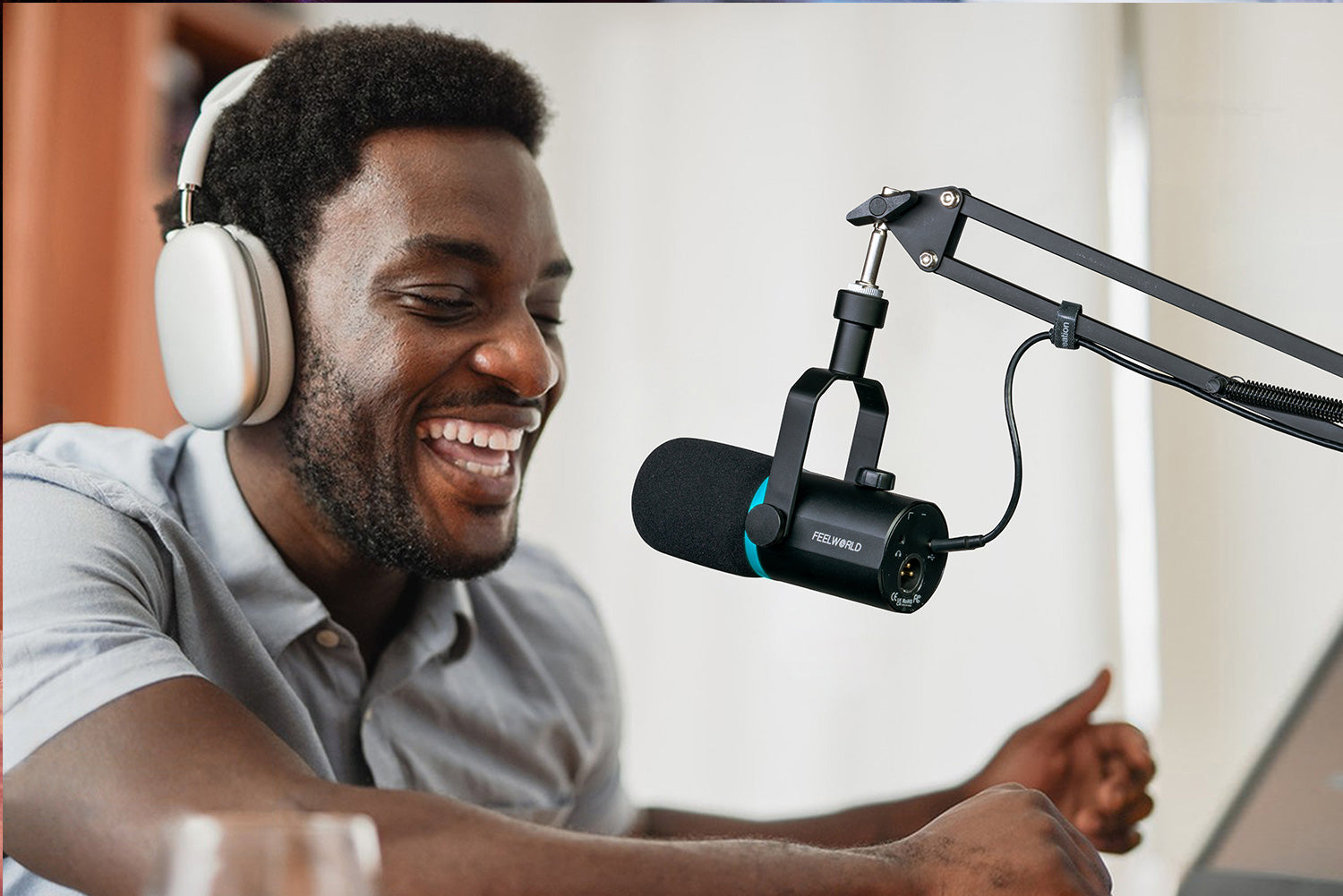How to Improve Your Live Streaming Studio?
Feb 19, 2024
While live streaming platforms make it easy to get started, issues can still arise, and you can fix most streaming audio issues by tweaking your streaming software and equipment. This will improve the sound quality of your live streams and create a better experience for your viewers. This guide aims at how to improve your live streaming studio.

If you're finding that people aren't listening to your live streaming, there could be several reasons why this might be happening. Here are some common issues:
1. Poor Audio Quality:
If your audio quality is subpar or if there are issues like background noise, distortion, or low volume levels, viewers may find it unpleasant to listen to your live stream.
2. Lack of Engagement:
If you're not engaging with your audience or if your content is not compelling or interactive, people may lose interest and tune out.
3. Inconsistent Schedule:
Not having a consistent streaming schedule can make it difficult for viewers to know when to expect your live streams, leading to lower viewership.
4. Technical Issues:
Technical problems such as buffering, lag, or stream interruptions can frustrate viewers and cause them to leave the stream.
5. Poor Promotion:
If you're not effectively promoting your live streams across social media platforms, websites, or other channels, you may not be reaching your target audience.

How to Improve Your Live Streaming Studio?
1. Improve Audio Quality:
Invest in a high-quality microphone and sound setup to ensure clear and crisp audio. Minimize background noise and adjust volume levels to create an enjoyable listening experience.
When your budget and live environment are limited, you need to choose a dynamic mic, which is less expensive than a capacitive microphone. At the same time, the dynamic mic has a heart-shaped orientation, which helps to isolate the sound source and reduce background noise. This makes them ideal for live environments where noise suppression is critical for clear audio transmission.
In addition to providing a superior live microphone, you also need a range of accessories and resources to enhance your live experience. Here are the essential accessories for a professional podcast setup:
- Live-streaming lights
- Audio Mixer
- Microphone stand
2. Engage with Your Audience:
Interact with your viewers by responding to comments, asking questions, and encouraging participation during the live stream. Make your content engaging and interactive to keep viewers interested.
3. Establish a Consistent Schedule:
Create a regular streaming schedule and stick to it. Let your audience know when they can expect your live streams so they can plan to tune in.
4. Address Technical Issues:
Test your equipment and internet connection before going live to prevent technical glitches. Ensure a stable internet connection and use reliable streaming software to minimize disruptions. What is a good upload speed for live streaming?
- Facebook recommends 4,000 Kbps (4 Mbps) as the maximum bit rate and 96 Kbps
- For good quality live streams, 1,500 Kbps-4,000 Kbps is recommended for YouTube Live video
- LinkedIn recommends 5 Mbps upload speed for live streams with a max resolution of 720p
- At 720p, Twitch recommends 4,500 Kbps for 60 or 50 fps and 3,000 Kbps for 25 or 30 fps
5. Promote Your Live Streams:
Utilize social media, email newsletters, website banners, and other marketing channels to promote your live streams. Build anticipation and generate buzz around your upcoming broadcasts.
Best Live Streaming Studio Microphones
While video is an important part of your live stream, audio is even more important. People accept low-res video quality (for whatever reason), but if the audio is hard to hear, choppy, or you have interference, they might not tune in. If you experience audio issues when live streaming, consider investing in a quality microphone. FEELWORLD will recommend the PM1 dynamic mic, which is compatible with both USB and XLR interfaces.

FEELWORLD PM1 utilizes a pickup pattern that is the cardioid pattern. The optimal range for pickup is 3 to 15 cm. Cardioid dynamic microphones excel at rejecting unwanted background noise. The cardioid polar pattern is designed to capture sound from the front while minimizing sound pickup from the sides and rear.
FEELWORLD PM1 dynamic microphone offers the flexibility to connect both via USB and XLR. USB-C can connect to a computer, smartphone, PS4/PS5, or other mobile devices. This feature allows for easy setup without the need for additional audio interfaces or complex software configurations. It's an excellent option for beginners or those who require quick and hassle-free recording capabilities. Only $59.99.
While USB connectivity offers convenience, XLR remains the industry standard for professional audio. When connected via XLR, you can take advantage of external preamps, mixers, and other professional audio equipment to fine-tune and enhance your sound. This flexibility ensures that your microphone can adapt to various recording scenarios and meet the demands of high-quality production.
Conclusion:
By addressing these issues and implementing these solutions, you can enhance the quality of your live streaming, engage your audience more effectively, and ultimately increase listener retention and viewership. Start your live stream!

